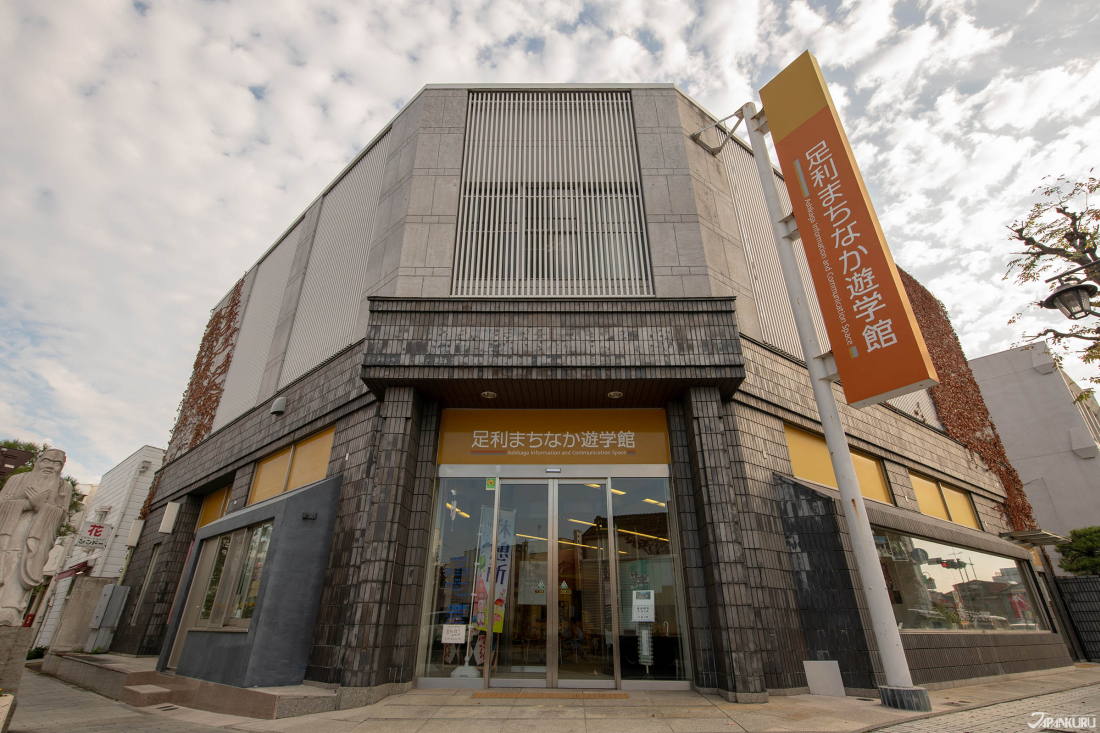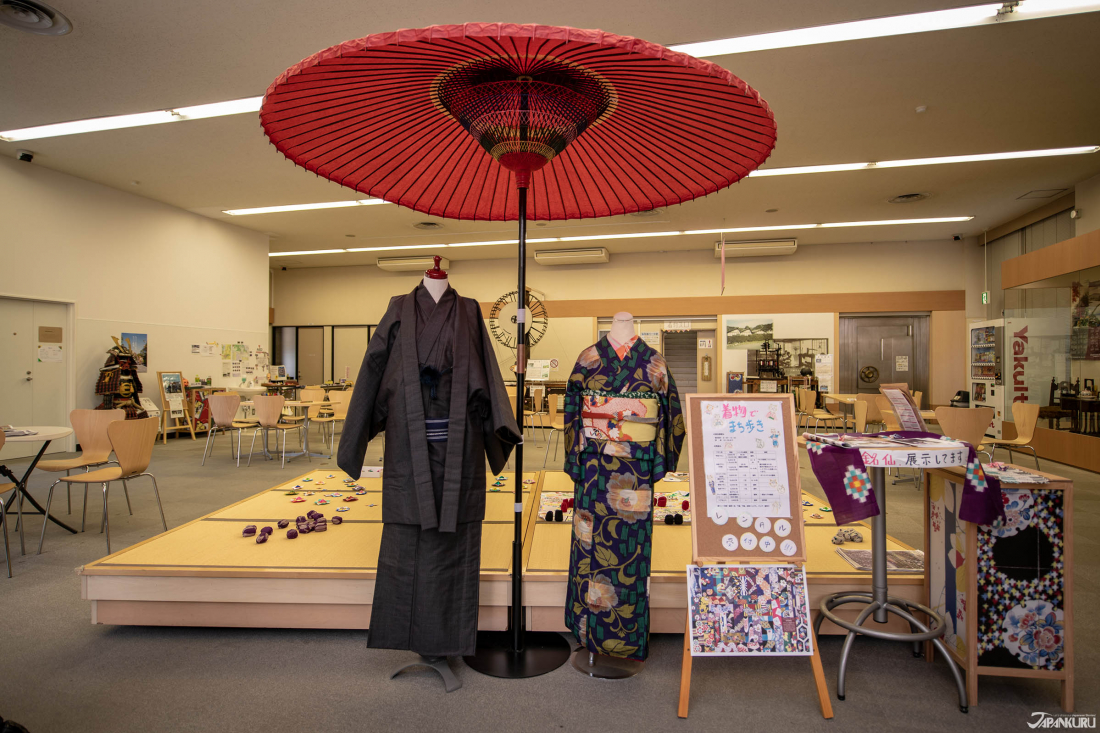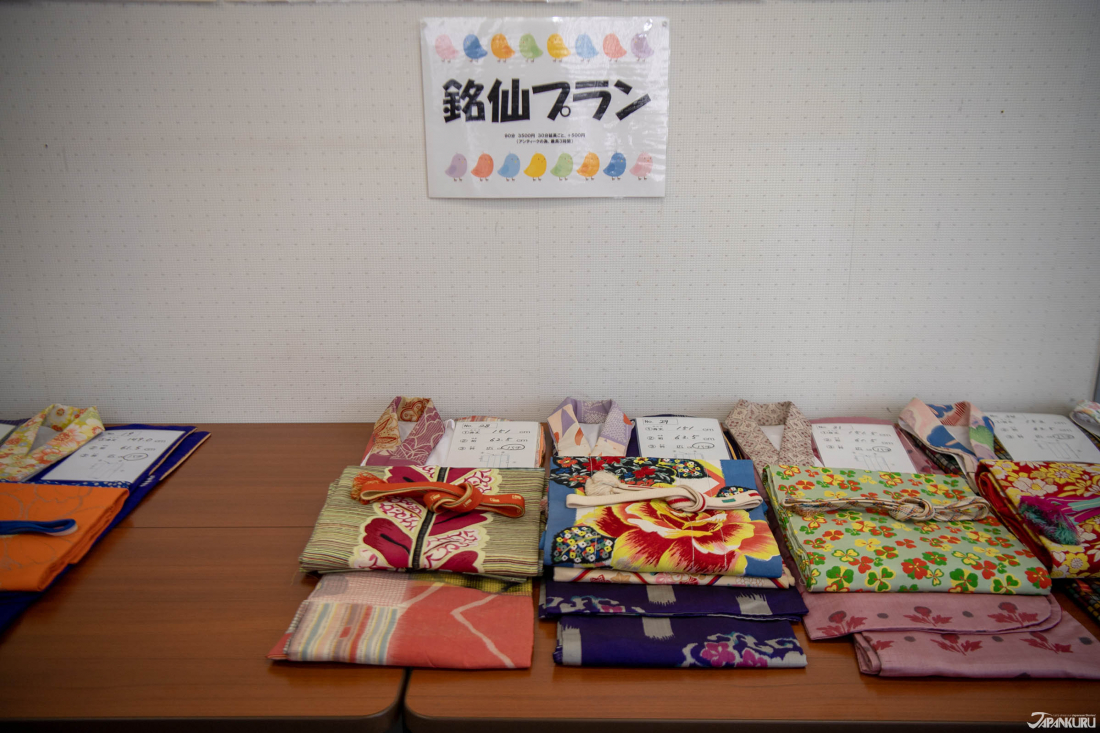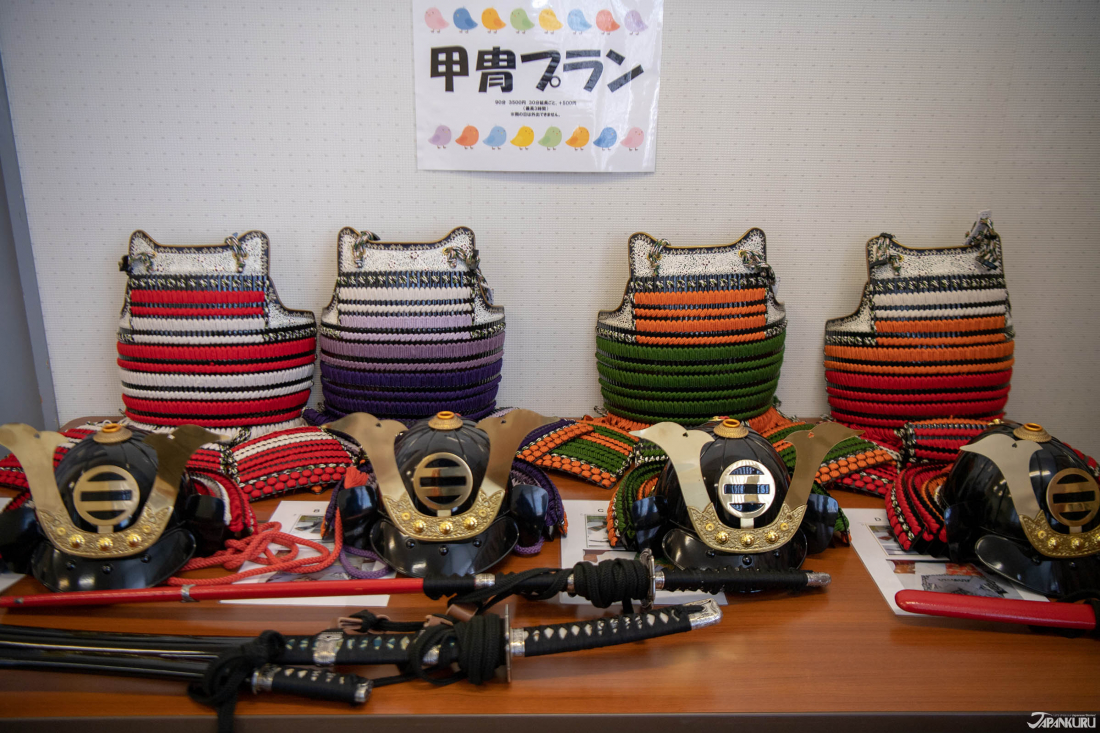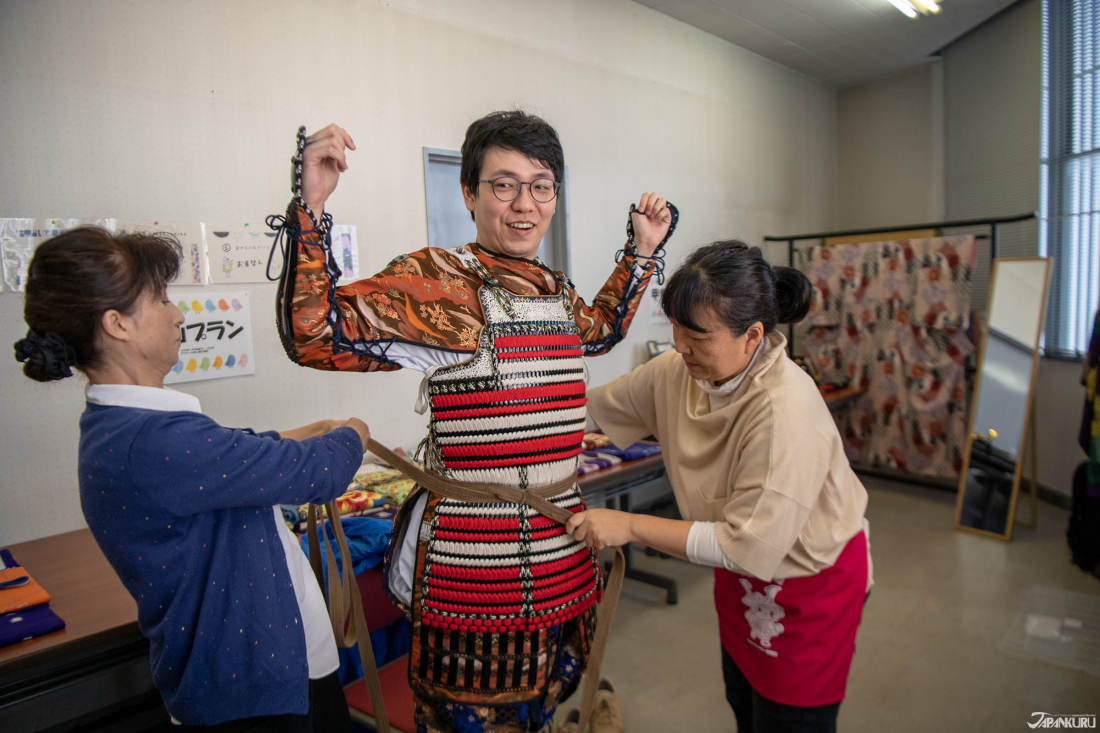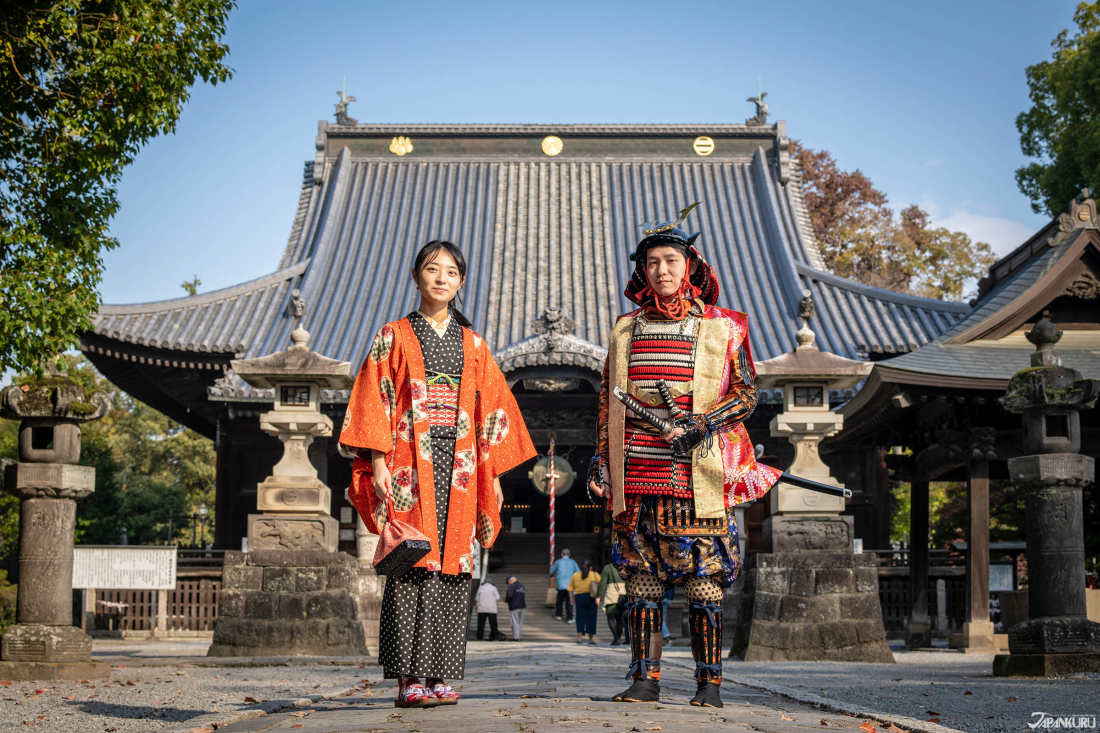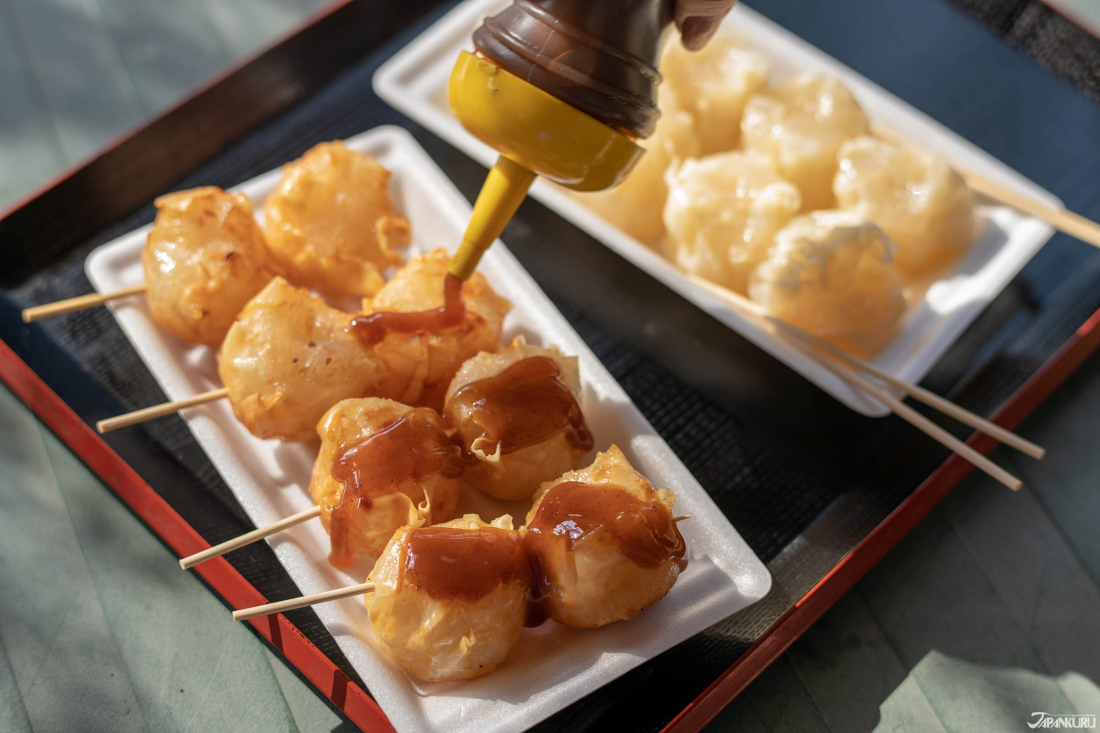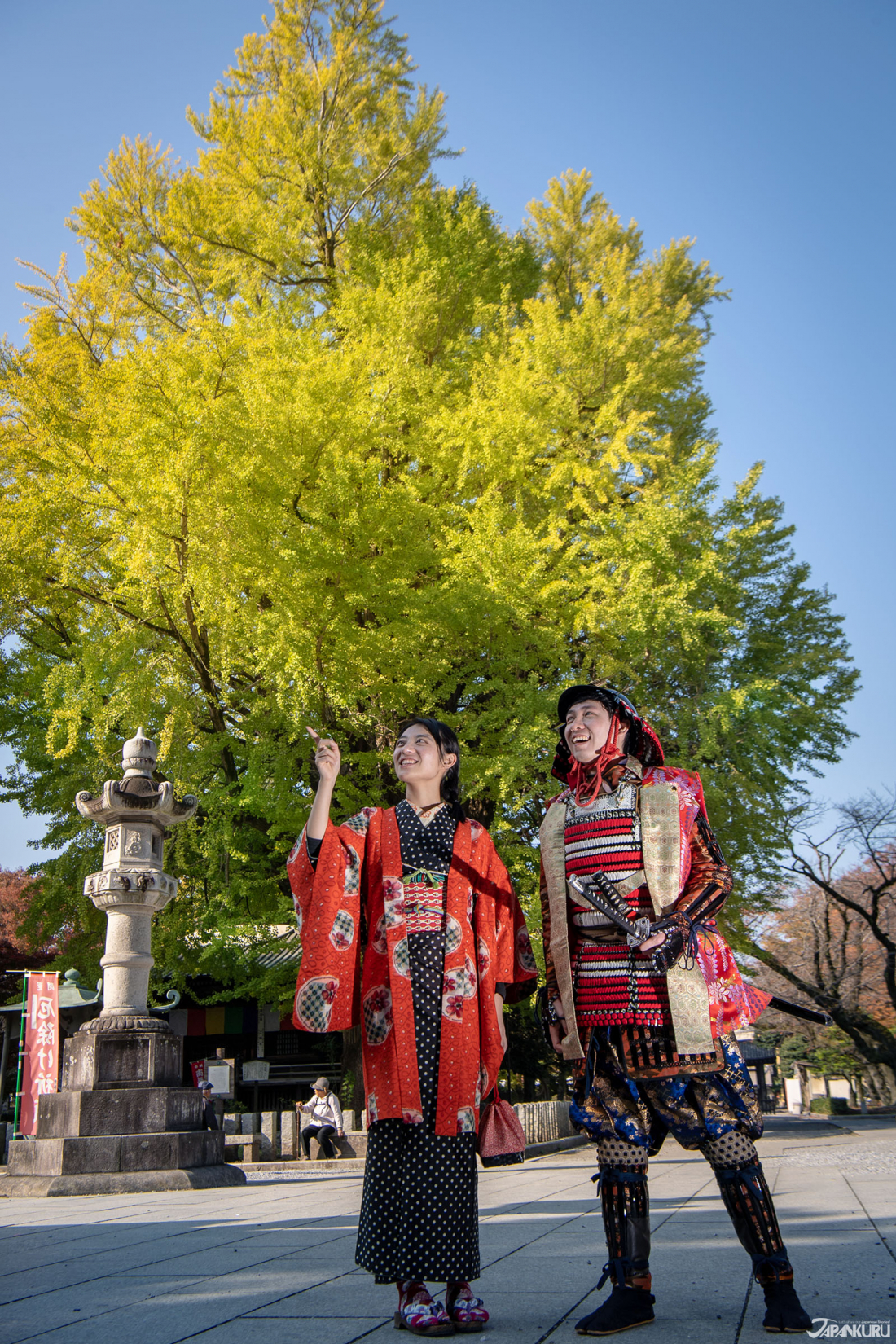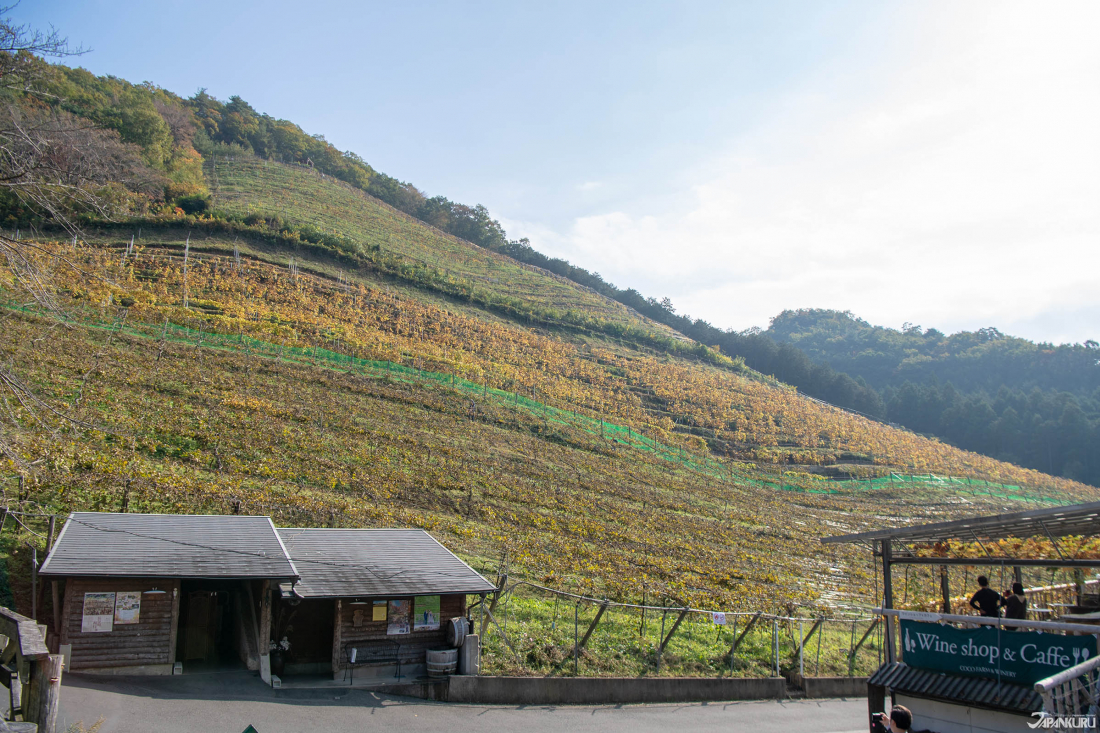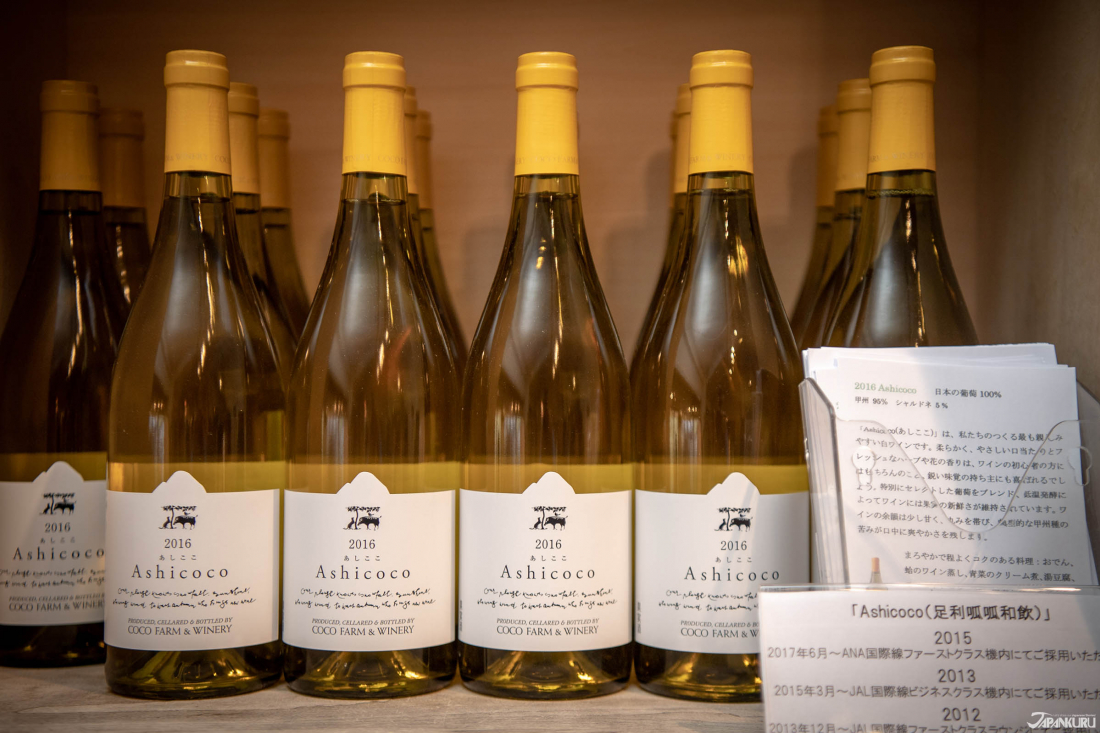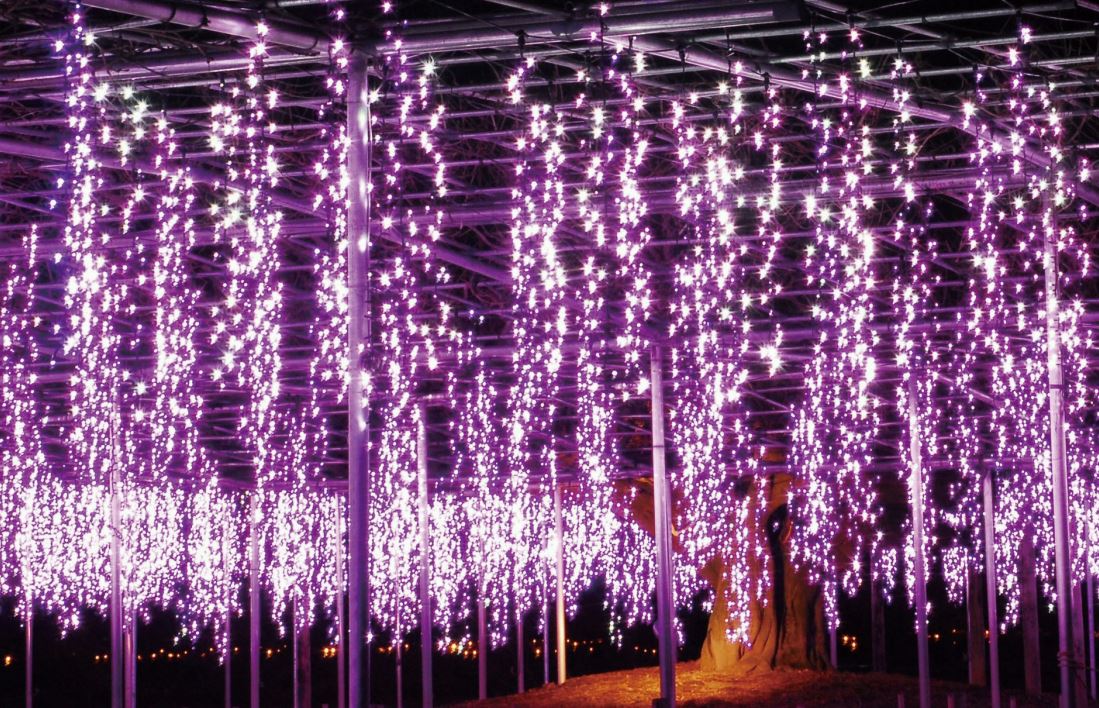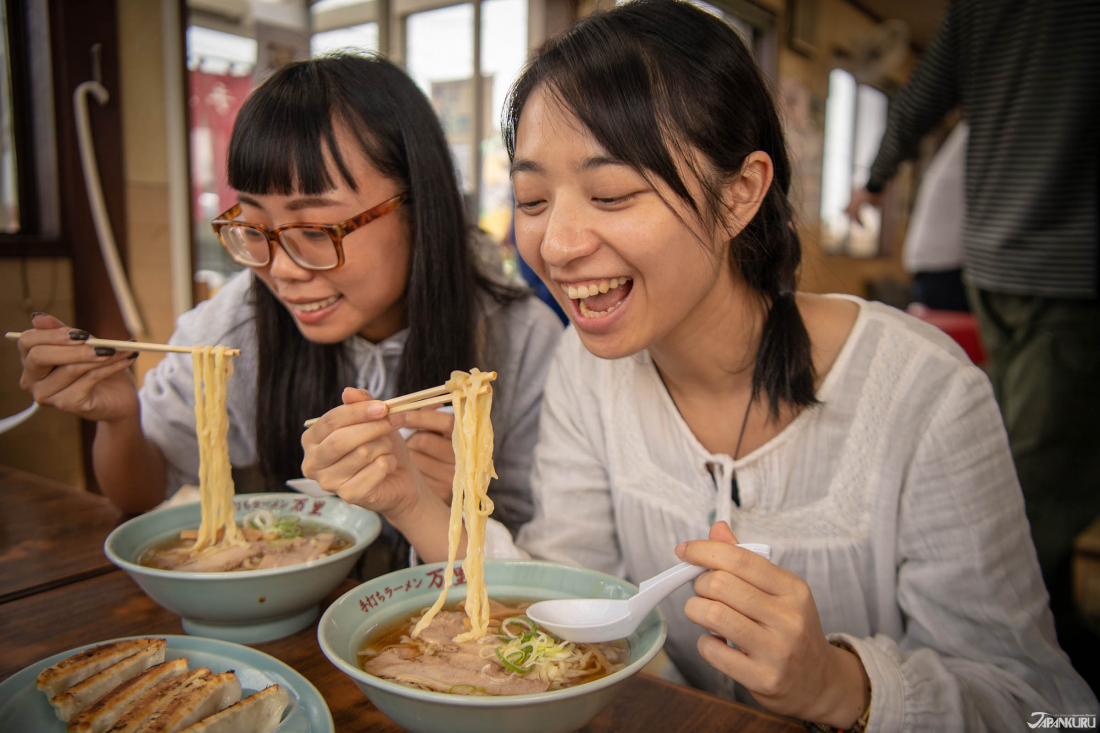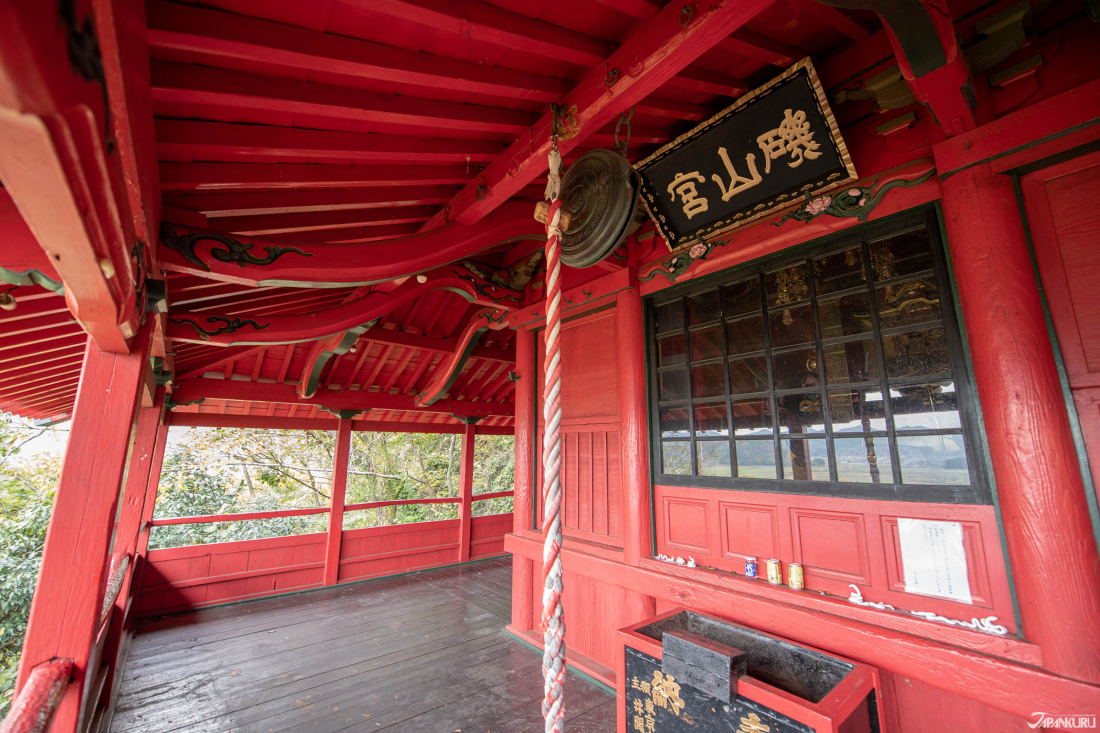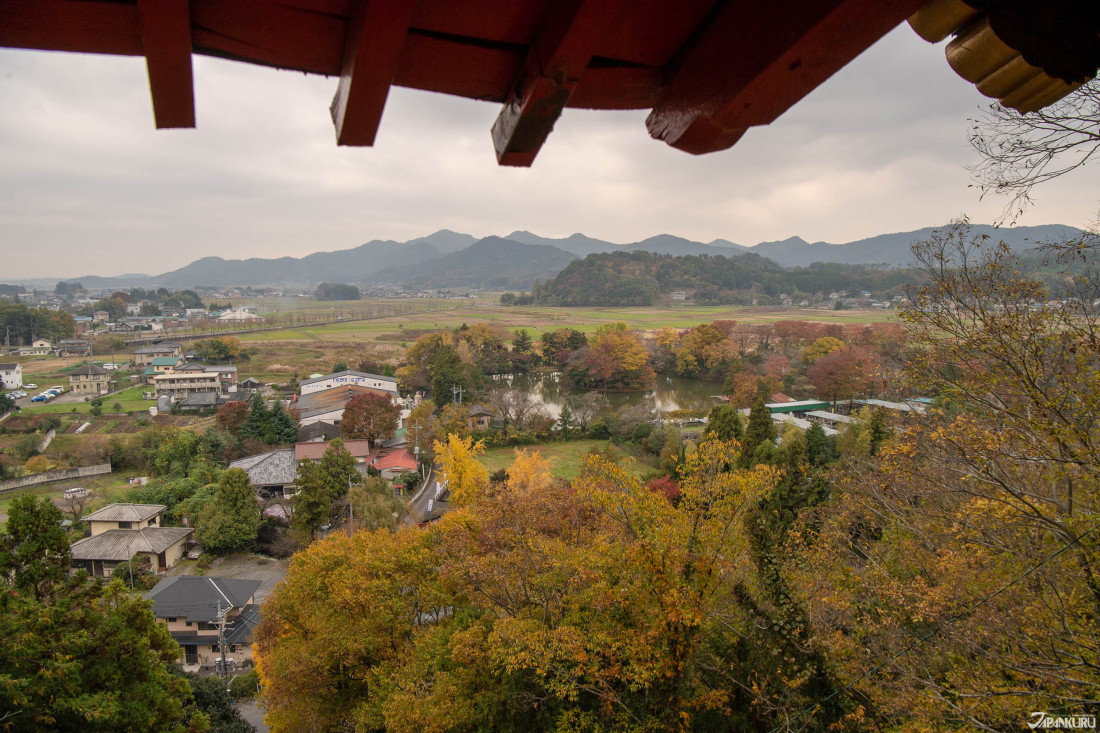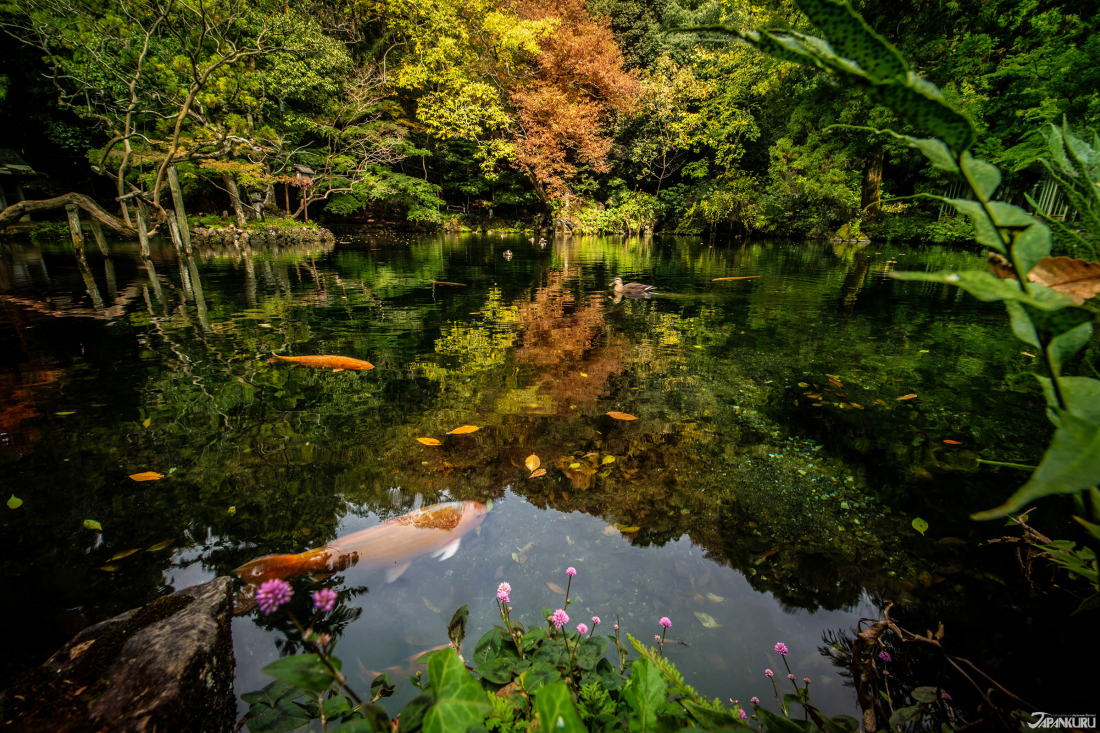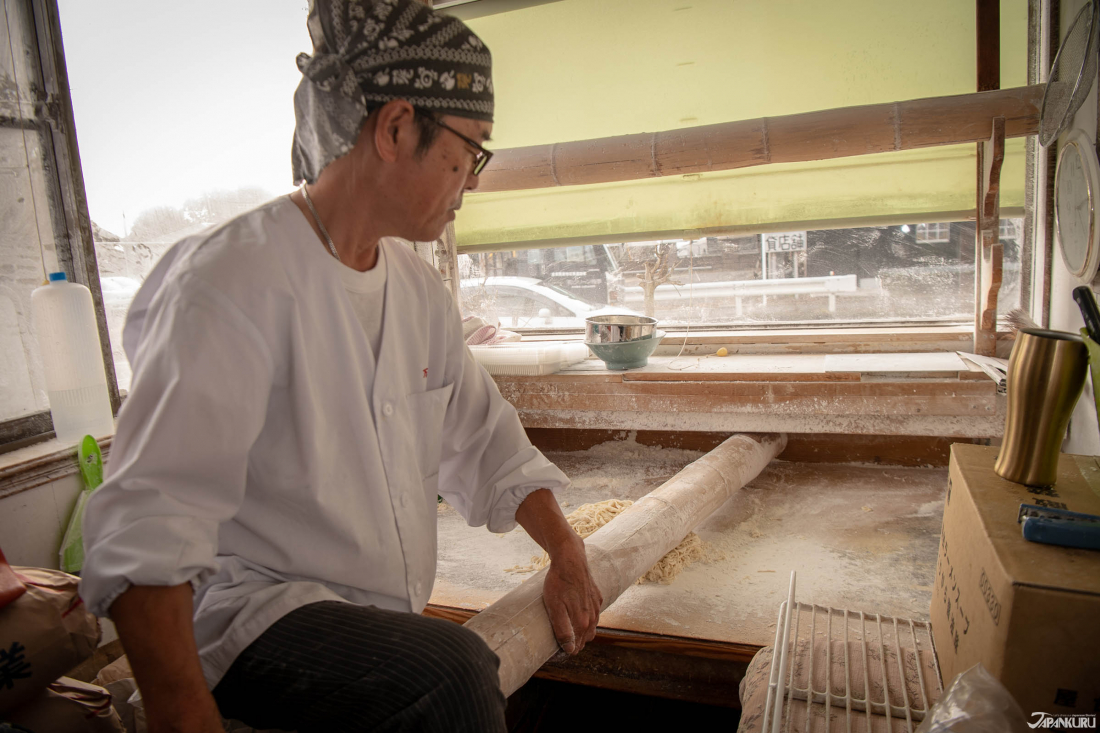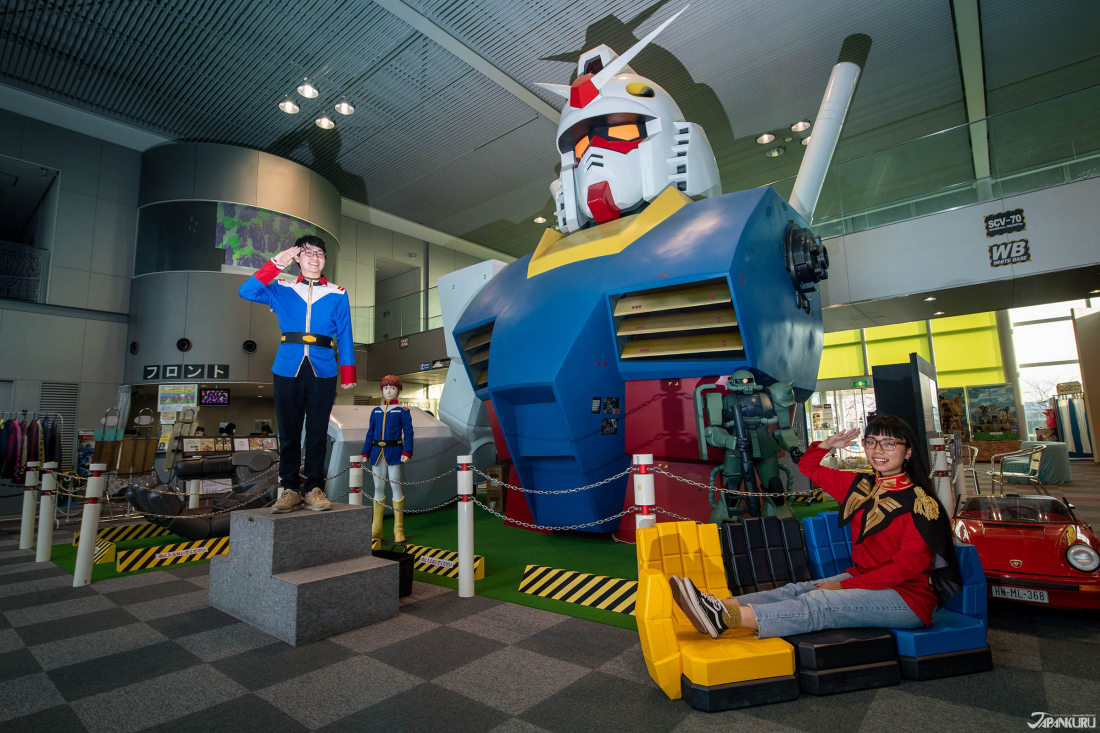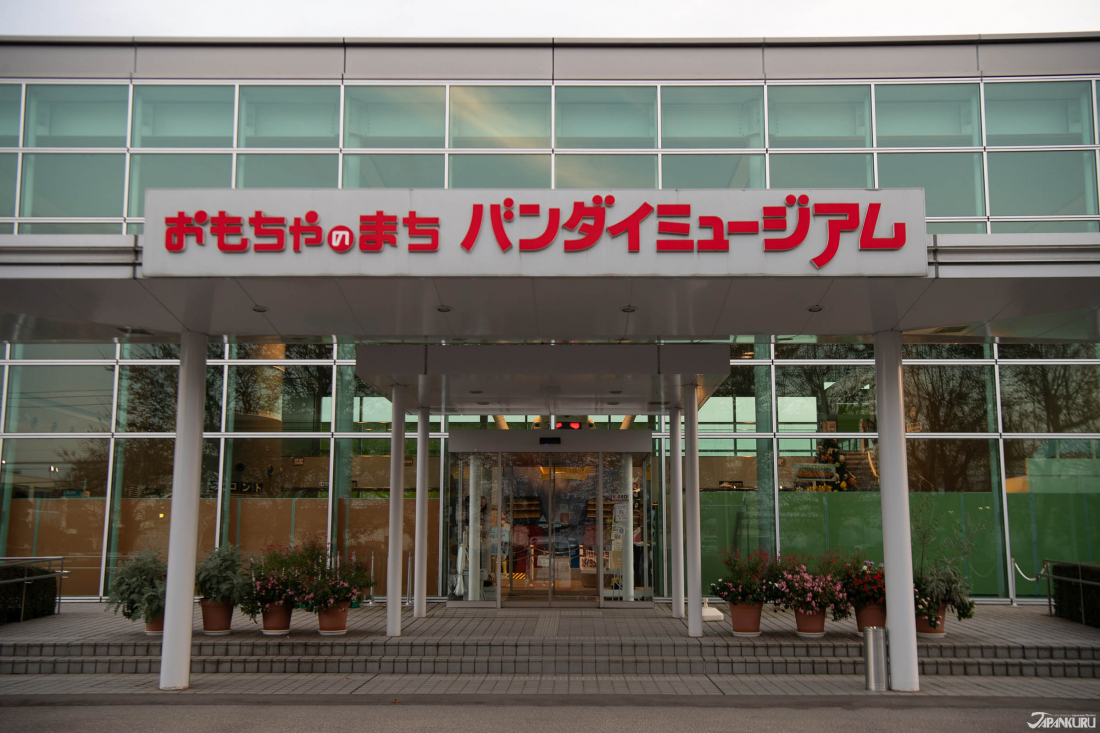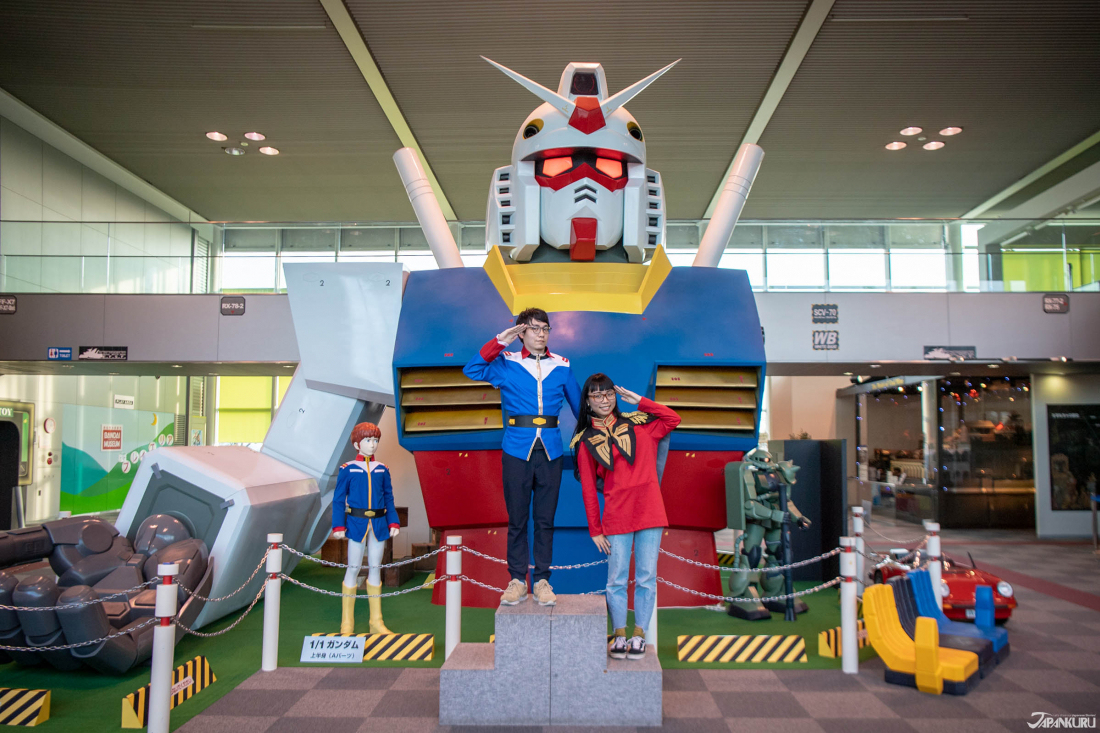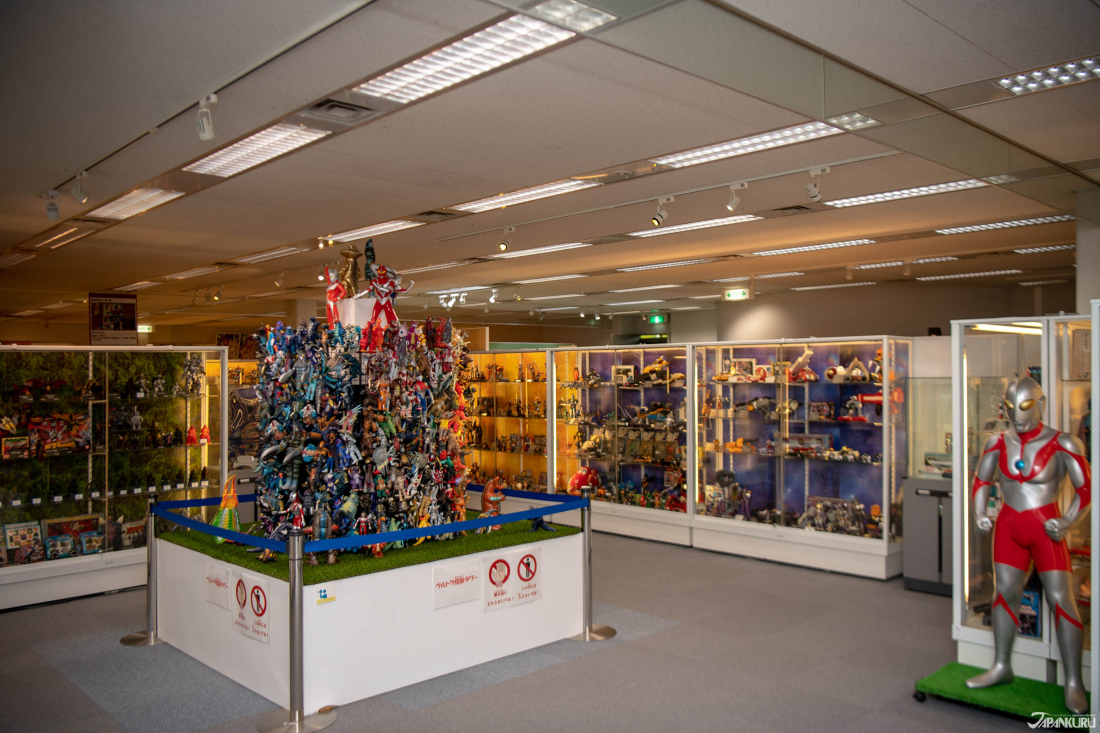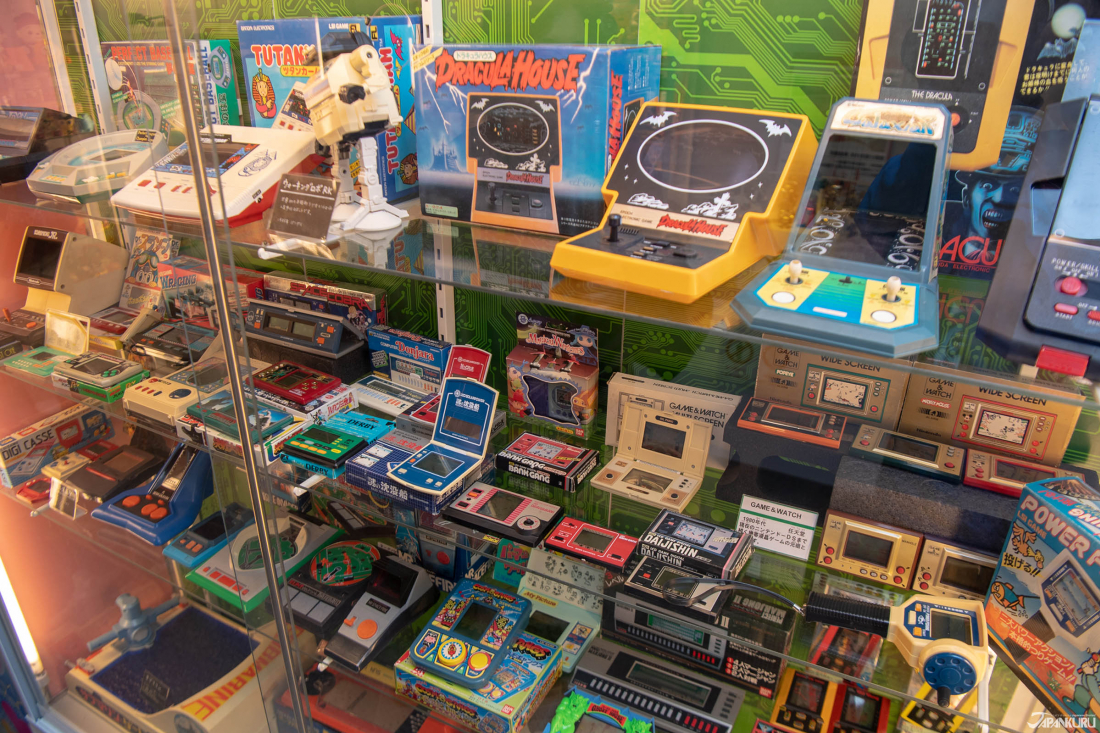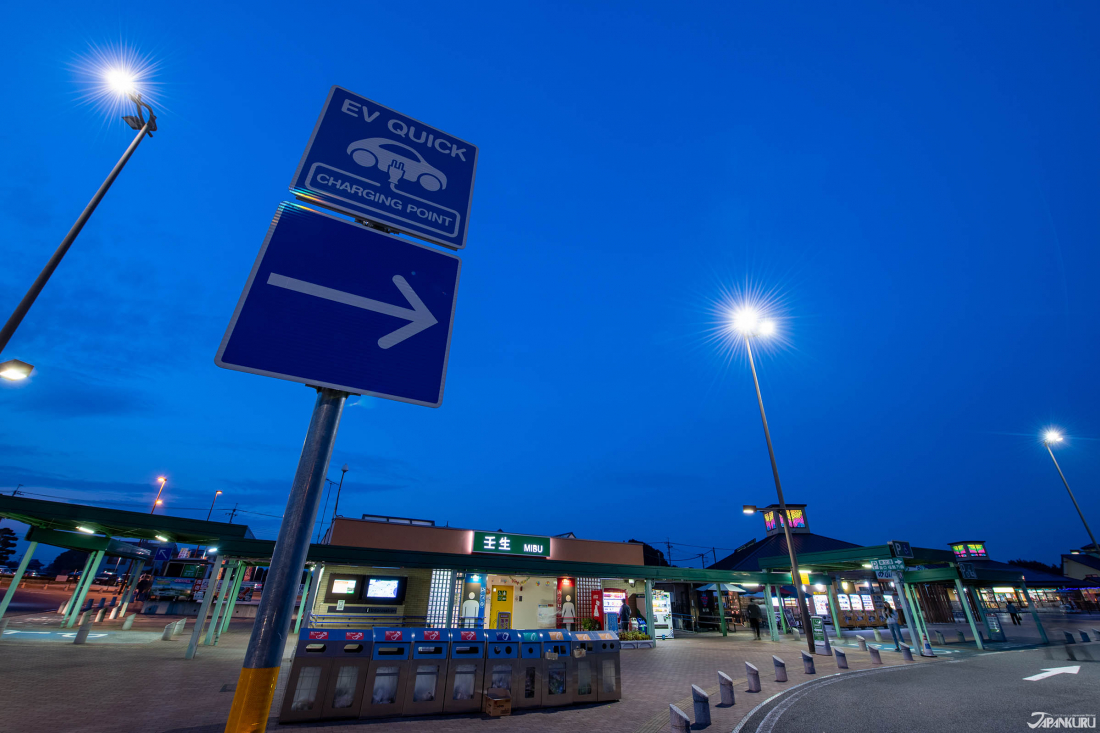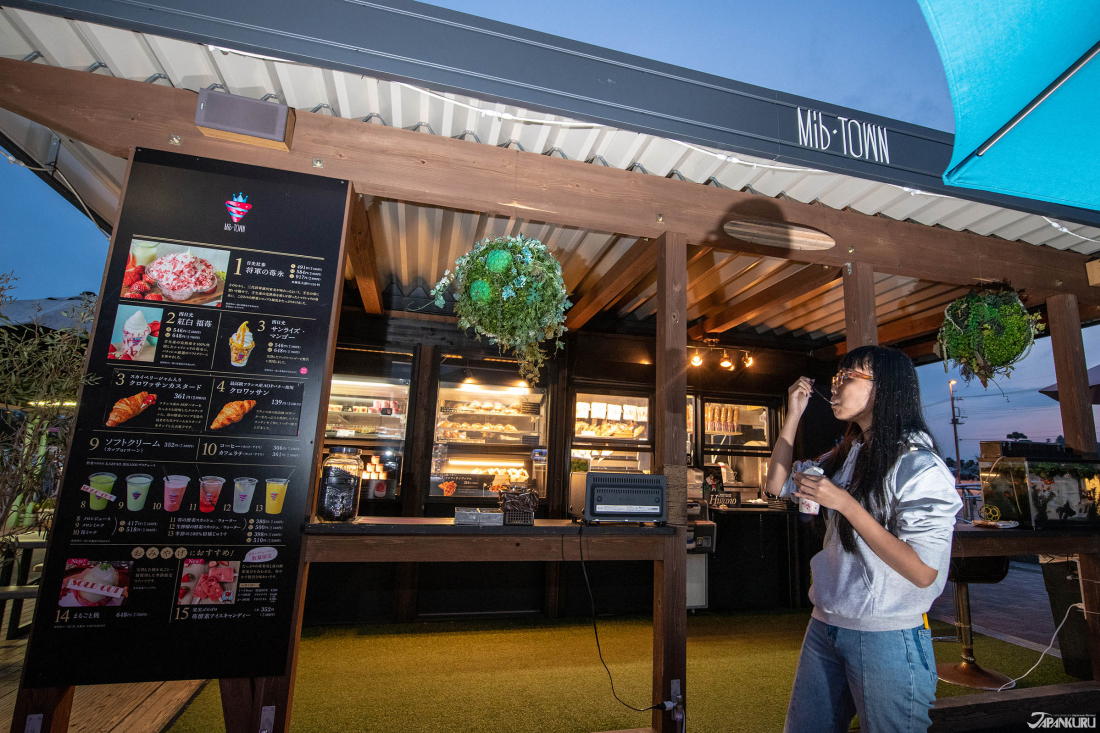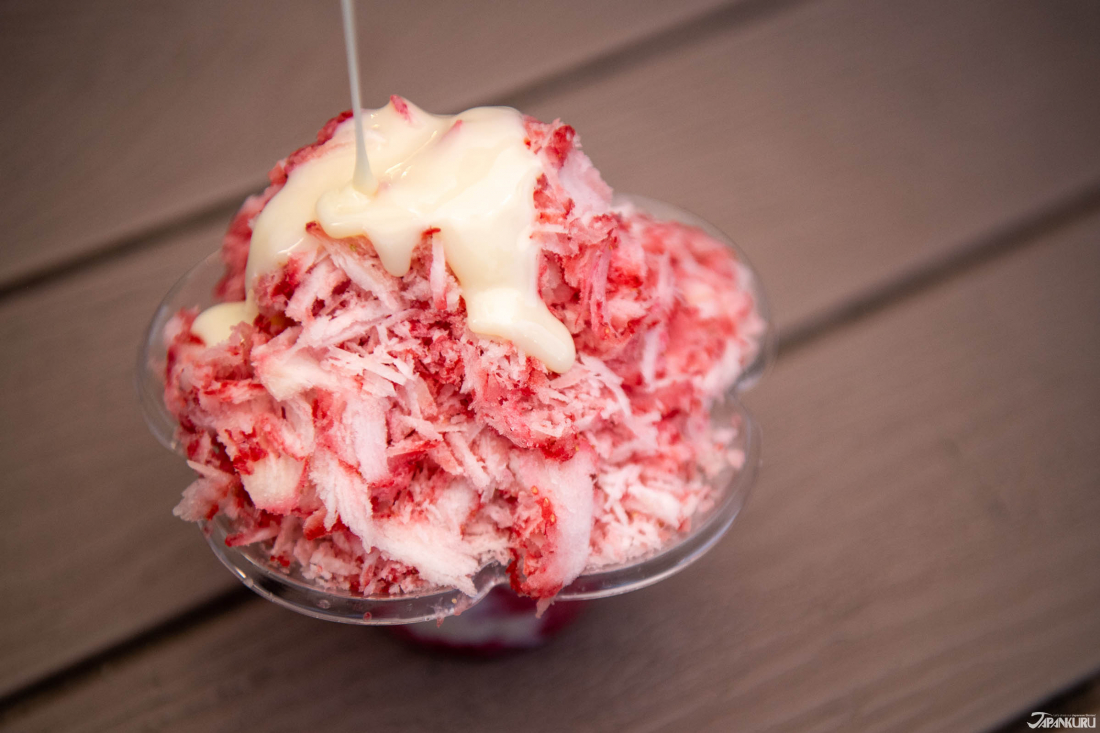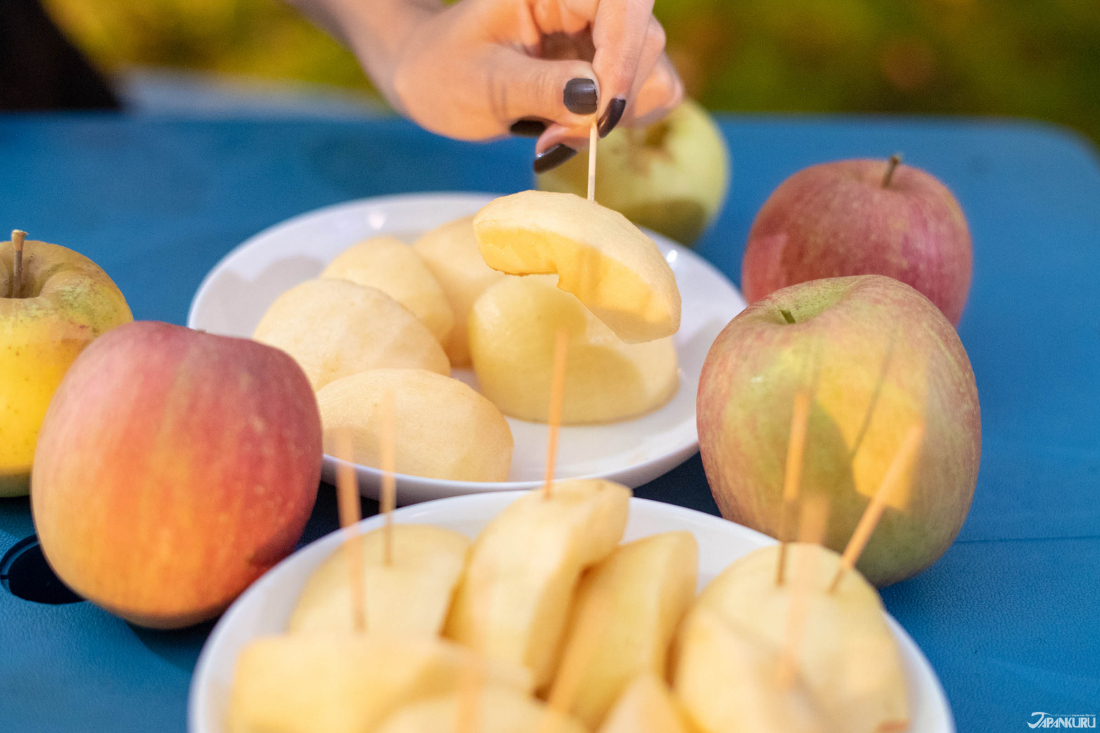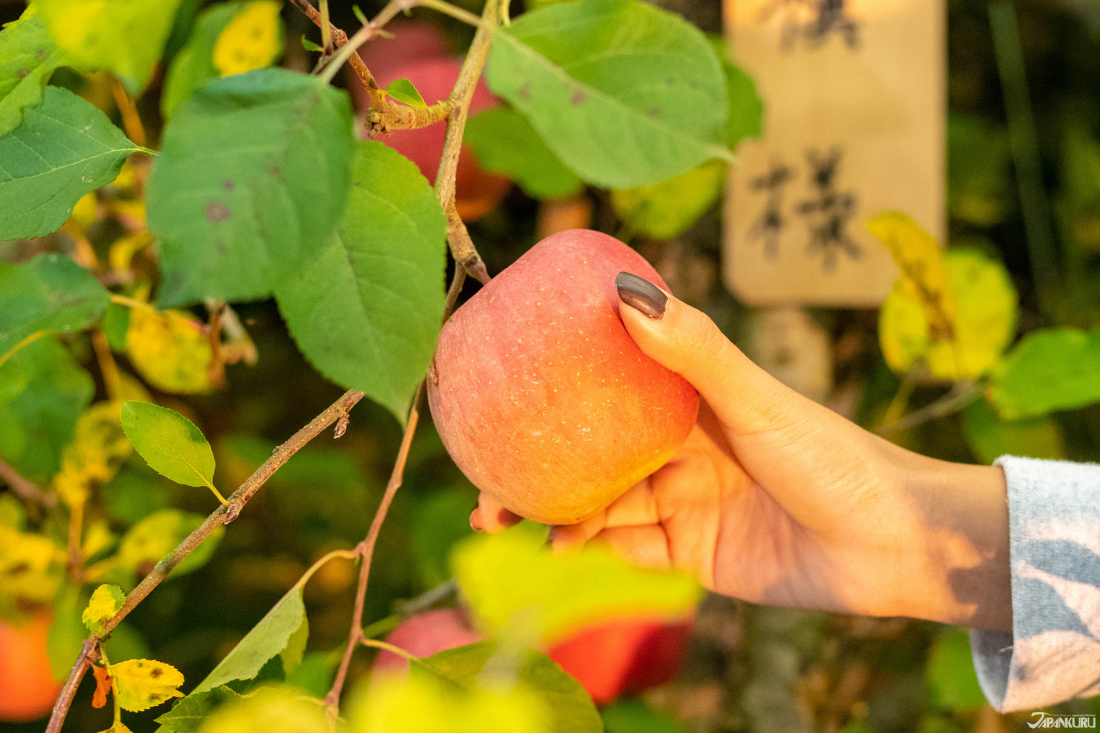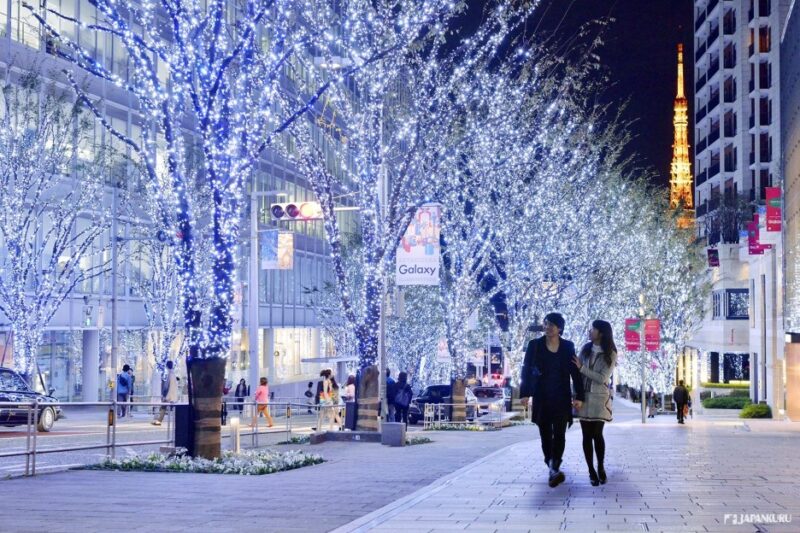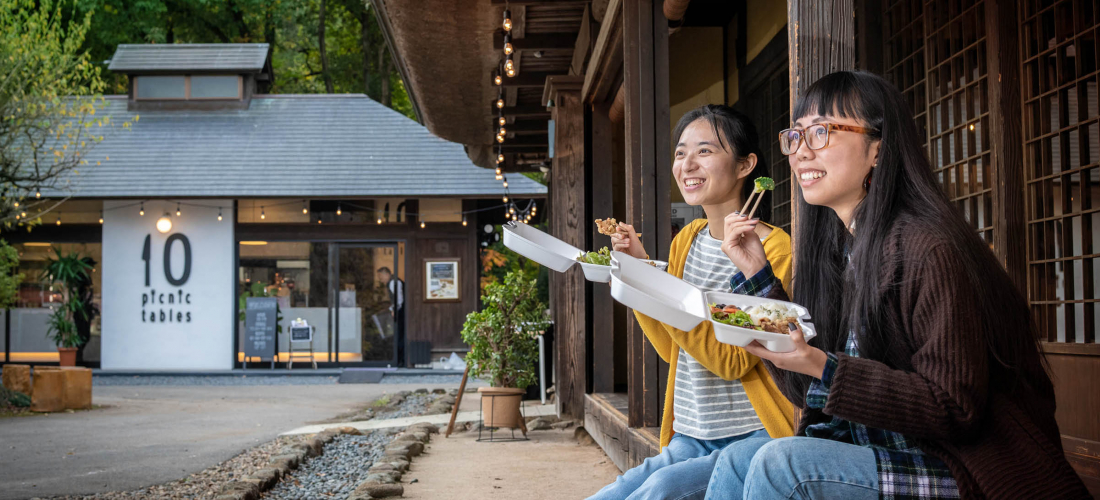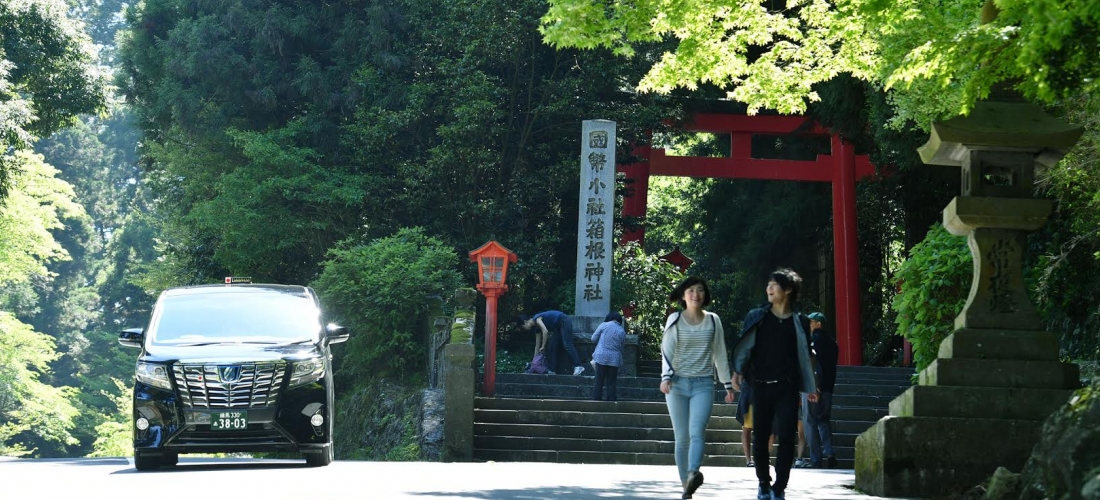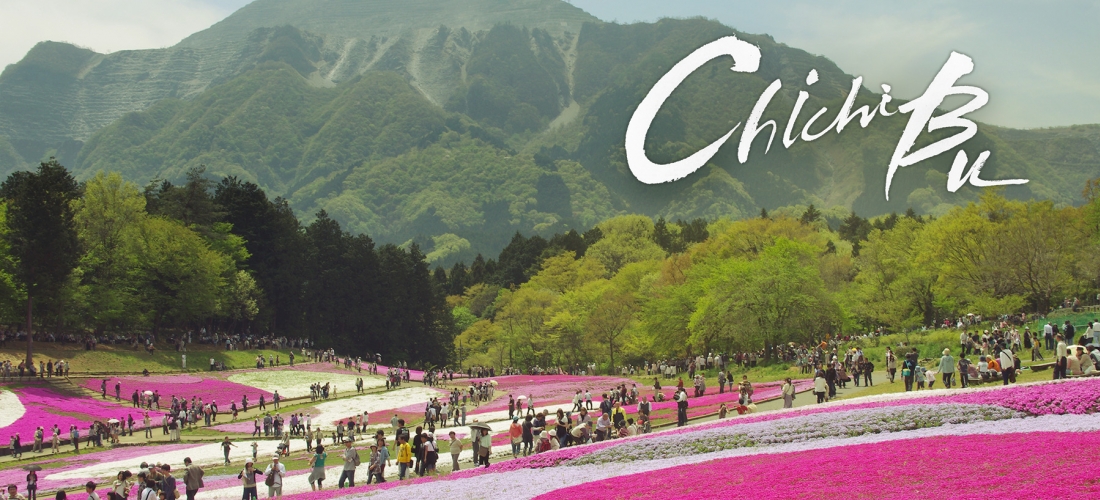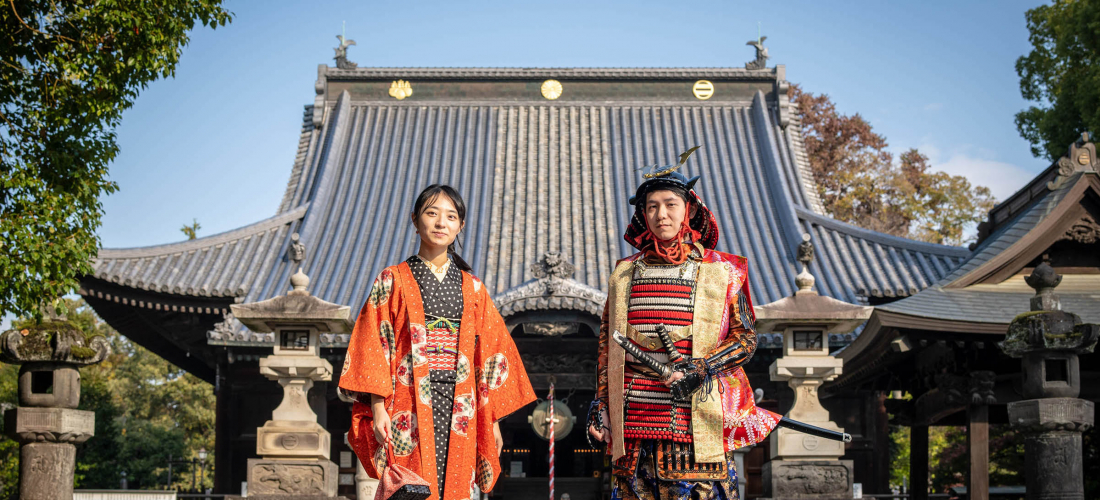
One of the main things to look forward to when traveling to Japan is experiencing Japanese culture. Whether it is wearing kimonos and walking around the old streets, tea ceremony, or going to a big anime festival, you become a part of something you have yet to experience in your home country. Towards the end of the summer, JAPANKURU went around Northern Tochigi and seeing its unknown beauty and experiencing things like zazen (Buddhist meditation where they hit your shoulder with a board).
This time we made our way to Southern Tochigi just in time for the autumn foliage. This trip seemed to be more about going back in time which gave us a whole new look at the Kanto region. Due to Tochigi is so close to Tokyo we just rented a car and made a road trip out of the whole thing. There are plenty of places to rent a car from in Tokyo but since we have always had such a great experience with Nissan as an agency and the reliability of the cars, we rented from there again this time too.
🚙Nissan Rent-a-Car
Official website
Vehicles and Rates
Outlet Locations
足利市
When it comes to Ashikaga, most people think of the Ashikaga Flower Park (あしかがフラワーパーク) where you can see one of the most beautiful and biggest displays of wisteria flowers. Ashikaga is known for a lot more though like their shogunate that ruled during 1300s~late 1500s. The Ashikaga clan's probably most famous part of history is reviving a school which had been opened in the 9th century making it the oldest school in Japan, the Ashikaga School (足利学校; Ashikaga Gakko). During this trip we did not go here unfortunately, rather we focused on a different side of Ashikaga culture and that is their silk textiles. Since the end of the Heian era (794 to 1185), Ashikaga has become an important silk producing area in Japan. Among some of the famous textiles that comes out of Ashikaga, the fashionable kimono "meisen silk" stands out the most.
Shogun, Kimono, and Meisen
Entering the Ashikaga Information & Communication Space (足利まちなか遊学館 Ashikaga Machinaka Yuugakukan), the first floor mainly consists of exhibits of ancient fabric related materials like meisen kimonos. Meisen silk was a popular silk fabric used for casual kimonos during the Taisho and Showa eras (1920 to 1950). It is one of the Japanese silks fabricated by weaving pre-dyed threads, utilizing the tie-and-resist ikat technique making it a lightweight silk weave yet supple. Said to be heavily influenced by European painters, meisen silk exhibits striking, bold and geometric prints. You can wear a meisen kimono for 90 minutes for 3500yen, but if by chance you would like to extend the time, you can for an extra 500yen for every half hour for up to 90 minutes.
Unfortunately, only women can wear meisen but there is another option and that is becoming a bushido (Japanese warlord)! Which if you ask me is the better of the two. Both meisen kimono and bushido outfits can be around out so why not put one on and explore the town?!
Although we came by car, you can get to the museum by train as well – just a 5min walk after getting off at Ashikaga Station.
There are many related historical materials on the first floor but if you want to put on the kimonos or armor head up to the second floor.
You can choose from some of these options if you would like to wear a meisen kimono.
Both men and women can wear the armor worn by Japanese ancient warriors!
The staff at the hall will of course help you put everything on and looking just right.
★Ashikaga Machikanaka Yogakudan (足利まちなか遊学館)
Google Maps
⏰9am~5pm
Closed: Every 3rd Monday, in the case the 3rd Monday is a Public Holiday, the following day will also closed
Official area homepage
The Birthplace of the Ashikaga Clan's Lord
Approximately a 5mim walk from the Ashikaga School, you will come to the national historical site Bannaji Temple (鑁阿寺). Bannaji Temple was once the home of the Ashikaga clan's founder, Ashikaga Yoshiyasu and much of it still remains as it was like with the moat around the temple. There are many important historical sites from the Kamakura period (1185–1333) to the Muromachi period (1336 to 1573), including the ancient gingko tree designated as a National Treasure and the Shoro bell tower which is a National Cultural Property.
While walking around the temple, we saw a small shop Dainichi-chaya (大日茶屋) selling Ashikaga steamed dumplings (足利シュウマイ; Ashikaga shumai). Normally shumai are stuffed with minced meat but Ashikaga shumai are vegetarian! Here was also the first time we have ever had the choice of having the shumai fried. It was a taste and texture completely new to us. If you are looking for something with more portions the yakisoba (grilled noodles) is another famous option.
The 650 year old is a ginkgo tree inside the temple.
During the fall their leaves are bright and yellow.
★Bannaji Temple (鑁阿寺)
Google Maps
Official website
First Class Wine Tasting in the Vineyards
The self-produced red wine Ashicoco was once used in first class on JAL and ANA flights, and the company it comes from COCO Farms and Winery is one of the popular attractions in Ashikaga's suburbs. At COCO Farms and Winery, there is a small building that is a shop and restaurant allowing you to dine or just simply try the wines from the winery if you choose. Also behind the restaurant is an area where you can learn about the history of COCO Farms and Winery and the processes involved in making their wine.
COCO Farms and Winery's small shop and restaurant face the fall colored hills where the vineyards are located.
Grab a bite or simply try the wines from the winery where they also sell homegrown fruit and veggies.
It costs 500yen, but with that you get to taste 5 kinds of wine and some small snacks.
If you want a tour of inside the winery, that also costs 500yen and a staff member will guide you in Japanese.
The high shelf wine from COCO Farms and Winery, "Ashicoco"
★COCO Farms and Winery
Google Maps
⏰10am~6pm (tasting 10am~5pm, restaurant 11am~5:30)
Closed: 12/31~1/2, the 3rd week of January, and the day before Harvest Festival
Official website (ENG)
A Garden of Light and Flowers
Although there weren't any light ups at the Ashikaga Flower Park when we visited Tochigi, we have been in the past so we thought it was worth mentioning in this article. If you come to Ashikaga between October and the beginning of February you should be able to see the illumination at the park. Areas in the park have different themes and apparently change during the event. Before you go be sure to check out their website first just in case any information has changed.
佐野市
As the fifth largest populated city in Tochigi Prefecture, Sano has become a topic in recent years because of Sano ramen. It has become such a big thing that the area made an official map of Sano ramen shops for those who enjoy ramen. But if you think that Sano only has ramen, you'd be wrong. In typical Tochigi fashion, the city of Sano has some very beautiful nature spots such as the Izuruhara Benten Pond (出流原弁天池) which was selected as one of the 100 best and cleanest water sources in Japan. There is a shrine nearby and the entire area is so beautiful in the fall, a must-see.
磯山弁財天・出流原弁天池 (磯山公園)
The Isoyama Banzaiten Shrine has a very unusual construction and there is on the precinct of a rocky mountain. It is said to be a friend of the Kiyomizu Temple in Kyoto due to its unique construction method that does not use nails. It is a beautiful spot where you can overlook the Sano plain. Also when you go to the shrine be sure to look for the statue of a white snake!
★Isoyama Banzaiten Shrine & Izuruhara Benten Pond
Google Maps
Japanese architecture at its finest. Not a single nail was used at this shrine!
Just part of the view you get from Isoyama Banzaiten Shrine.
In the precincts of the shrine, there are places to wash money. So when you wash your money and put it in your wallet, its believed you will become richer!
Also on the grounds, there is a big clock that you can ring yourself by pulling the giant plank.
Sano's famous Hand-made Ramen
As one of Kanto's ramen representatives, the biggest characteristics of Sano Ramen is its use of bamboo to flatten and prepare the dough and the soy sauce broth. This time, JAPANKURU visited "Banri" (万里) ramen shop, which is one of the most popular shops in terms of "Sano Ramen". What we found interesting was depending on the person the soy sauce broth tasted different. To some it was refreshing, others saltier. Even during on weekdays the store is basically full by noon.
Ramen shop "Bari" may not look like much, but that's also how you know it will be great.
At Banri you can either choose between sitting at the counter or on the floor like in the picture.
You can watch them pound and make the ramen using a giant bamboo log.
Since the ramen is handmade right there, you can expect super soft and chewy noodles that goes well with the soy sauce broth.
In addition to ramen, the fried dumplings ("gyoza) at the store are also one of the popular options.
★Sano Ramen Banri (佐野ラーメン 万里)
Google Maps
⏰11~6pm
Closed: Wednesdays
壬生町
The current town of Mibu has been orchestrated as a toy town. A lot of toy factories are gathered, offering toys in/from Japan and abroad, including manufacturers such as Bandai and Tomica. In the 1990s, the manufacturing of toys moved to China, but Mibu has made an area for these toys even holding events. It is from there that in 2007, the Bandai Museum opened.
©創通・サンライズ
the Famous Japanese Toy Maker You Knew as a Kid
Speaking of Japanese toy manufacturers, everyone should have heard the name of Bandai at some point in their lives. I mean, you have your classic figurines from Gundam, Sailor Moon, One Piece, Dragon Ball, Digimon, Astro Boy, etc. are all under Bandai. Bandai has built a new toy museum in Miyako-cho, displaying toys, accessories, and collectibles made by Bandai. Many are rare European/Western antique toys which surprised us.
Bandai has created a new toy museum, which has collected the childhood of many adults and children home and abroad.
©創通・サンライズ
There is a bust of the original size of Gundam in the center of the museum. Put on some costumes and get a pic!
In addition to Gundam, you can see toys such as One Piece, Dragon Ball, Kamen Rider, and other classic anime toys under Bandai.
Bandai isn't only toys, it also consists of video games! Which of course you will get to also see at the museum.
Be sure not to miss Gundam special exhibition area!
★Bandai Museum
Google Maps
⏰10am~4:30pm (admission ends at 4pm)
💴Adults 1000yen, Children 600yen, 65 and older 800yen
Official website
A Great Place to Make a Pit Stop
The Mibu Highway Park, which is about 12 times the size of the Tokyo Dome, is an interesting rest stop. In addition to the general resting facilities, it also has Tochigi Wanpaku Park and Mibu-machi Toy Museum. Just park your car at the rest stop and check out local vegetables and fruit for sale or walk to the park or museum mentioned above. Since it is along the main highway heading back to Tokyo, it is a great place to make a pitstop before making the trip home. Especially since anymore it is rare to see such rest stops (that includes things like a park and museum) in Japan.
Eating Tochigi's Strawberries in a New Way
There is a sweet shop called Mib-TOWN at the station on the way. "Shogun's Strawberry Ice" (将軍のいちご氷), which is shaved ice (kakigori) is currently very popular within Tochigi. Why though? It is because to make this shaved ice, ice is not used at all! Instead of ice, what they do is freeze ripened strawberries from Tochigi, freeze them, then slice the strawberries while still frozen. By far one of the coolest (literally) deserts/snacks we have ever tried.
Mib-TOWN is a part of the rest station is small but offers all sorts of snacks special to Tochigi.
The condensed milk that tops off the "Shogun's Strawberry Ice" plays off the sweet tartness that you get from strawberries.
Another strawberry dessert, "Kohaku Fuku Ichigo" (紅白 福苺), is also popular with tourists wanting to try some of Tochigi's strawberries.
★Mib-TOWN
Google Maps
⏰10am~6pm, Sat and Sun 9am~6pm
Closed: Wednesdays
Facebook page
鹿沼市
In the first two years, Kanuma City, which was officially announced as the "City of Strawberries", is also famous for its azalea flowers. Then in terms of crops, we were surprised to learn it is also famous for strawberries, leeks, pears, and tomatoes. Located in the north of the Kanto region, the area consists of mountainous hills and terraced terrain. Kanuma was once the country's first wild state hemp producing area so because of this, the barley was cultivated to make the buckwheat more delicious. Which is why this time while in Kanuma, fruit picking and eating soba (buckwheat) noodles became our primary purpose.
Try All the Apples You Want for 500yen!!!
I remember the last time we introduced Watanabe Vineyard in Nasukarasuyama City where you can try a few of the homegrown grapes for 100yen, but HIZATSUKI Fruits Plaza raises the bar. In addition to eating all the apples you want for just 500yen, you also get to pick the apples yourself. Which is the real "fruit picking experience" in Japan if you ask us. Something else you may be happy to know is that this place has the qualifications of an organic farmer certified by Tochigi Prefecture. Along with apples, the orchard also grows fruits like strawberries, cherries, and grapes.
We were lucky to go during apple season! All you can eat full-size apples for just 500yen!
Using the bag-free organic cultivation method, we watched the mature and rosy color of Fuji apples.
★HIZATSUKI Fruits Plaza (鹿沼ひざつきフルーツプラザ)
Google Maps
⏰10am~6pm, Sat and Sun 9am~6pm
Closed: Wednesdays
Official website
Most people when you eat soba (buckwheat) noodles, you eat it with leeks. However here was the first place we have ever heard of using a different greenery in place of leeks. As a special dish of Iori, you can eat soba noodles with chives. It is surprisingly fresh and does not overpower the soba taste. In addition, the tempura in the store is also very distinctive, rather than eating it with the typical tempura sauce, you pare it with salt.
Both buckwheat and chives are special menu items at Iori, so it only makes sense that they would decide to combine the two.
The refreshing taste from soba noodles together with the boiled chives leaves a natural taste in your mouth.
★Iori (手打ちそば 一庵)
Google Maps
⏰11am~2:30pm, 5:30pm~7pm
Closed: Wednesdays
Official area homepage
Our journey doesn't stop there! Be sure to check out the second half of our Southern Tochigi trip here!!
COMMENT
FEATURED MEDIA
VIEW MORE 
A New Tokyo Animal Destination: Relax & Learn About the World’s Animals in Japan
#pr #japankuru #anitouch #anitouchtokyodome #capybara #capybaracafe #animalcafe #tokyotrip #japantrip #카피바라 #애니터치 #아이와가볼만한곳 #도쿄여행 #가족여행 #東京旅遊 #東京親子景點 #日本動物互動體驗 #水豚泡澡 #東京巨蛋城 #เที่ยวญี่ปุ่น2025 #ที่เที่ยวครอบครัว #สวนสัตว์ในร่ม #TokyoDomeCity #anitouchtokyodome

Shohei Ohtani Collab Developed Products & Other Japanese Drugstore Recommendations From Kowa
#pr #japankuru
#kowa #syncronkowa #japanshopping #preworkout #postworkout #tokyoshopping #japantrip #일본쇼핑 #일본이온음료 #오타니 #오타니쇼헤이 #코와 #興和 #日本必買 #日本旅遊 #運動補充能量 #運動飲品 #ช้อปปิ้งญี่ปุ่น #เครื่องดื่มออกกำลังกาย #นักกีฬา #ผลิตภัณฑ์ญี่ปุ่น #อาหารเสริมญี่ปุ่น

도쿄 근교 당일치기 여행 추천! 작은 에도라 불리는 ‘가와고에’
세이부 ‘가와고에 패스(디지털)’ 하나면 편리하게 이동 + 가성비까지 완벽하게! 필름카메라 감성 가득한 레트로 거리 길거리 먹방부터 귀여움 끝판왕 핫플&포토 스폿까지 총집합!
Looking for day trips from Tokyo? Try Kawagoe, AKA Little Edo!
Use the SEIBU KAWAGOE PASS (Digital) for easy, affordable transportation!
Check out the historic streets of Kawagoe for some great street food and plenty of picturesque retro photo ops.
#pr #japankuru #도쿄근교여행 #가와고에 #가와고에패스 #세이부패스 #기모노체험 #가와고에여행 #도쿄여행코스 #도쿄근교당일치기 #세이부가와고에패스
#tokyotrip #kawagoe #tokyodaytrip #seibukawagoepass #kimono #japantrip

Hirakata Park, Osaka: Enjoy the Classic Japanese Theme Park Experience!
#pr #japankuru #hirakatapark #amusementpark #japantrip #osakatrip #familytrip #rollercoaster #retrôvibes #枚方公園 #大阪旅遊 #關西私房景點 #日本親子旅行 #日本遊樂園 #木造雲霄飛車 #히라카타파크 #สวนสนุกฮิราคาตะพาร์ค

🍵Love Matcha? Upgrade Your Matcha Experience With Tsujiri!
・160년 전통 일본 말차 브랜드 츠지리에서 말차 덕후들이 픽한 인기템만 골라봤어요
・抹茶控的天堂!甜點、餅乾、飲品一次滿足,連伴手禮都幫你列好清單了
・ส่องมัทฉะสุดฮิต พร้อมพาเที่ยวร้านดังในอุจิ เกียวโต
#pr #japankuru #matcha #matchalover #uji #kyoto #japantrip #ujimatcha #matchalatte #matchasweets #tsujiri #말차 #말차덕후 #츠지리 #교토여행 #말차라떼 #辻利抹茶 #抹茶控 #日本抹茶 #宇治 #宇治抹茶 #日本伴手禮 #抹茶拿鐵 #抹茶甜點 #มัทฉะ #ของฝากญี่ปุ่น #ชาเขียวญี่ปุ่น #ซึจิริ #เกียวโต

・What Is Nenaito? And How Does This Sleep Care Supplement Work?
・你的睡眠保健品——認識「睡眠茶氨酸錠」
・수면 케어 서플리먼트 ‘네나이토’란?
・ผลิตภัณฑ์เสริมอาหารดูแลการนอน “Nenaito(ネナイト)” คืออะไร?
#pr #japankuru #sleepcare #japanshopping #nenaito #sleepsupplement #asahi #睡眠茶氨酸錠 #睡眠保健 #朝日 #l茶胺酸 #日本藥妝 #日本必買 #일본쇼핑 #수면 #건강하자 #네나이토 #일본영양제 #อาหารเสริมญี่ปุ่น #ช้อปปิ้งญี่ปุ่น #ร้านขายยาญี่ปุ่น #ดูแลตัวเองก่อนนอน #อาซาฮิ

Japanese Drugstore Must-Buys! Essential Items from Hisamitsu® Pharmaceutical
#PR #japankuru #hisamitsu #salonpas #feitas #hisamitsupharmaceutical #japanshopping #tokyoshopping #traveltips #japanhaul #japantrip #japantravel

Whether you grew up with Dragon Ball or you just fell in love with Dragon Ball DAIMA, you'll like the newest JINS collab. Shop this limited-edition Dragon Ball accessory collection to find some of the best Dragon Ball merchandise in Japan!
>> Find out more at Japankuru.com! (link in bio)
#japankuru #dragonball #dragonballdaima #animecollab #japanshopping #jins #japaneseglasses #japantravel #animemerch #pr

This month, Japankuru teamed up with @official_korekoko to invite three influencers (originally from Thailand, China, and Taiwan) on a trip to Yokohama. Check out the article (in Chinese) on Japankuru.com for all of their travel tips and photography hints - and look forward to more cool collaborations coming soon!
【橫濱夜散策 x 教你怎麼拍出網美照 📸✨】
每次來日本玩,是不是都會先找旅日網紅的推薦清單?
這次,我們邀請擁有日本豐富旅遊經驗的🇹🇭泰國、🇨🇳中國、🇹🇼台灣網紅,帶你走進夜晚的橫濱!從玩樂路線到拍照技巧,教你怎麼拍出最美的夜景照。那些熟悉的景點,換個視角說不定會有新發現~快跟他們一起出發吧!
#japankuru #橫濱紅磚倉庫 #汽車道 #中華街 #yokohama #japankuru #橫濱紅磚倉庫 #汽車道 #中華街 #yokohama #yokohamaredbrickwarehouse #yokohamachinatown

If you’re a fan of Vivienne Westwood's Japanese designs, and you’re looking forward to shopping in Harajuku this summer, we’ve got important news for you. Vivienne Westwood RED LABEL Laforet Harajuku is now closed for renovations - but the grand reopening is scheduled for July!
>> Find out more at Japankuru.com! (link in bio)
#japankuru #viviennewestwood #harajuku #omotesando #viviennewestwoodredlabel #viviennewestwoodjapan #비비안웨스트우드 #오모테산도 #하라주쿠 #日本購物 #薇薇安魏斯伍德 #日本時尚 #原宿 #表參道 #japantrip #japanshopping #pr

Ready to see TeamLab in Kyoto!? At TeamLab Biovortex Kyoto, the collective is taking their acclaimed immersive art and bringing it to Japan's ancient capital. We can't wait to see it for ourselves this autumn!
>> Find out more at Japankuru.com! (link in bio)
#japankuru #teamlab #teamlabbiovortex #kyoto #kyototrip #japantravel #artnews
Photos courtesy of teamLab, Exhibition view of teamLab Biovortex Kyoto, 2025, Kyoto ® teamLab, courtesy Pace Gallery

Japanese Makeup Shopping • A Trip to Kamakura & Enoshima With Canmake’s Cool-Toned Summer Makeup
#pr #canmake #enoshima #enoden #에노시마 #캔메이크 #japanesemakeup #japanesecosmetics

⚔️The Robot Restaurant is gone, but the Samurai Restaurant is here to take its place. Check it out, and don't forget your coupon!
🍣신주쿠의 명소 로봇 레스토랑이 사무라이 레스토랑으로 부활! 절찬 쿠폰 발급중
💃18歲以上才能入場的歌舞秀,和你想的不一樣!拿好優惠券去看看~
#tokyo #shinjuku #samurairestaurant #robotrestaurant #tokyotrip #도쿄여행 #신주쿠 #사무라이레스토랑 #이색체험 #할인이벤트 #歌舞伎町 #東京景點 #武士餐廳 #日本表演 #日本文化體驗 #japankuru #japantrip #japantravel #japanlovers #japan_of_insta

Japanese appliance & electronics shopping with our KOJIMA x BicCamera coupon!
用JAPANKURU的KOJIMA x BicCamera優惠券買這些正好❤️
코지마 x 빅 카메라 쿠폰으로 일본 가전 제품 쇼핑하기
#pr #japankuru #japanshopping #kojima #biccamera #japaneseskincare #yaman #dji #osmopocket3 #skincaredevice #日本購物 #美容儀 #相機 #雅萌 #日本家電 #일본여행 #면세 #여행꿀팁 #일본쇼핑리스트 #쿠폰 #일본쇼핑 #일본브랜드 #할인 #코지마 #빅카메라 #japankurucoupon


